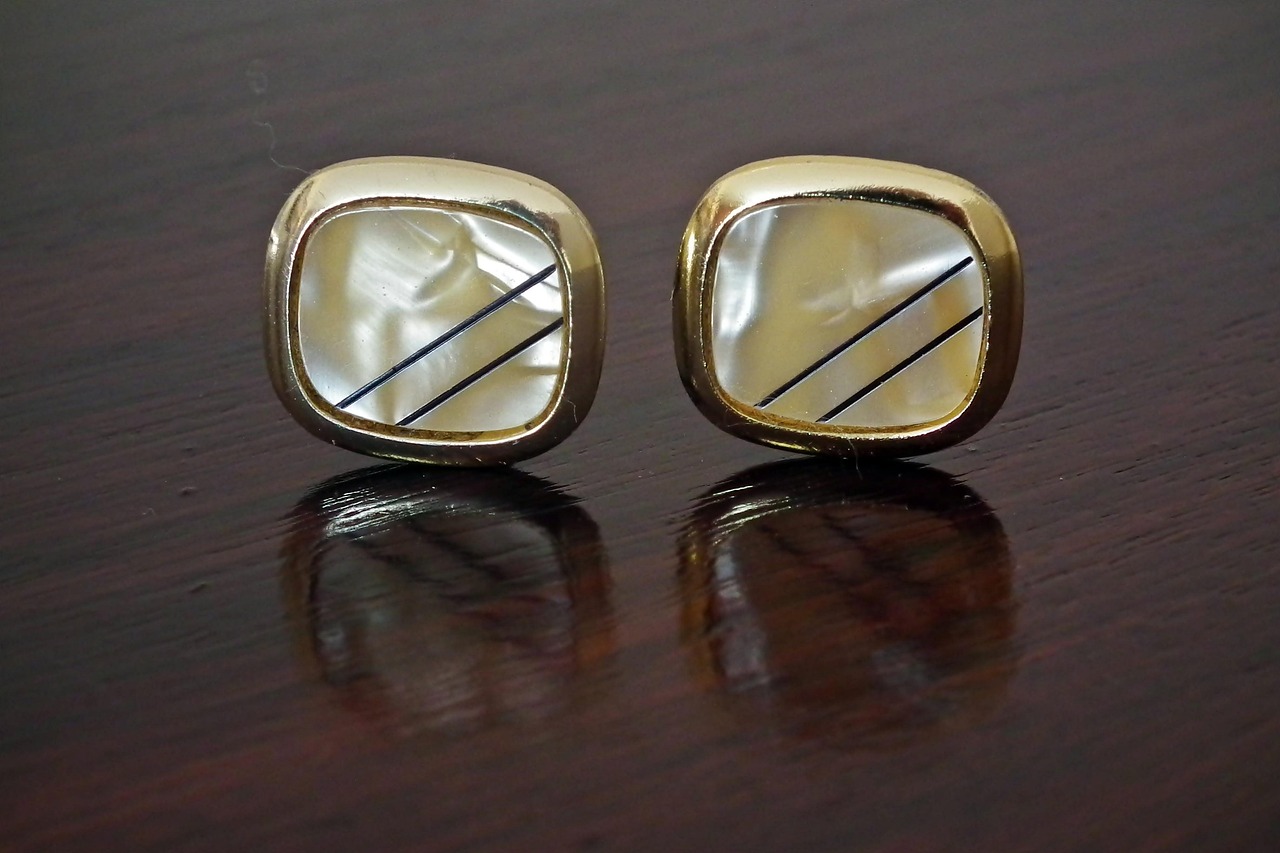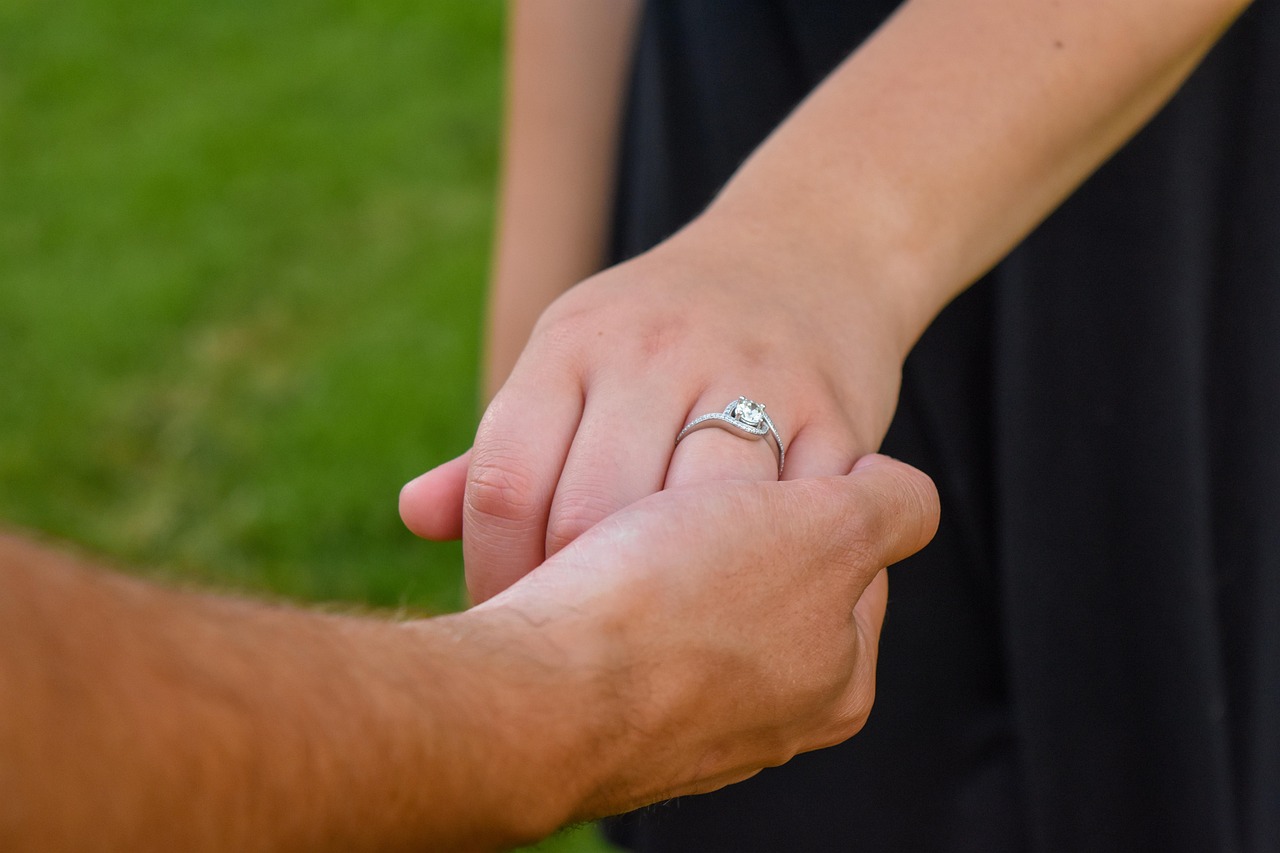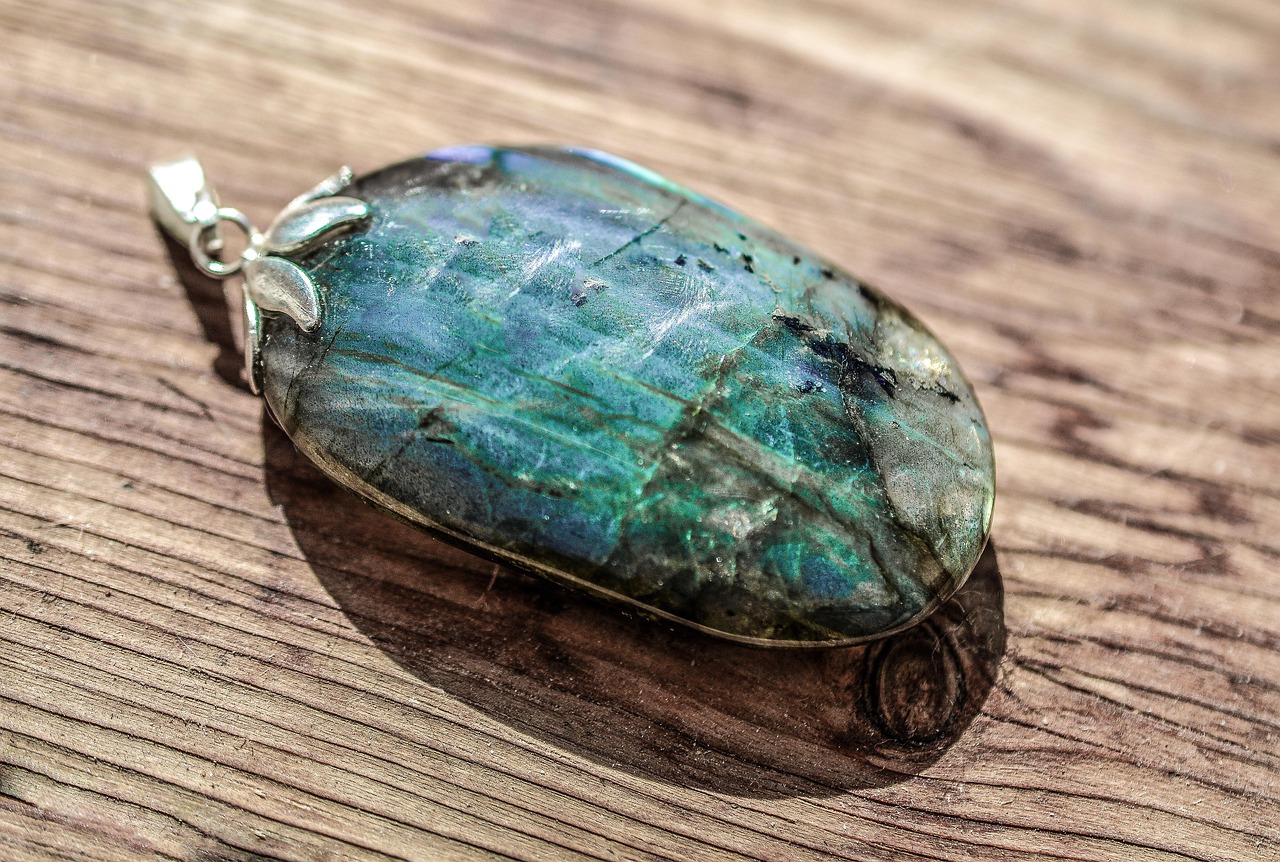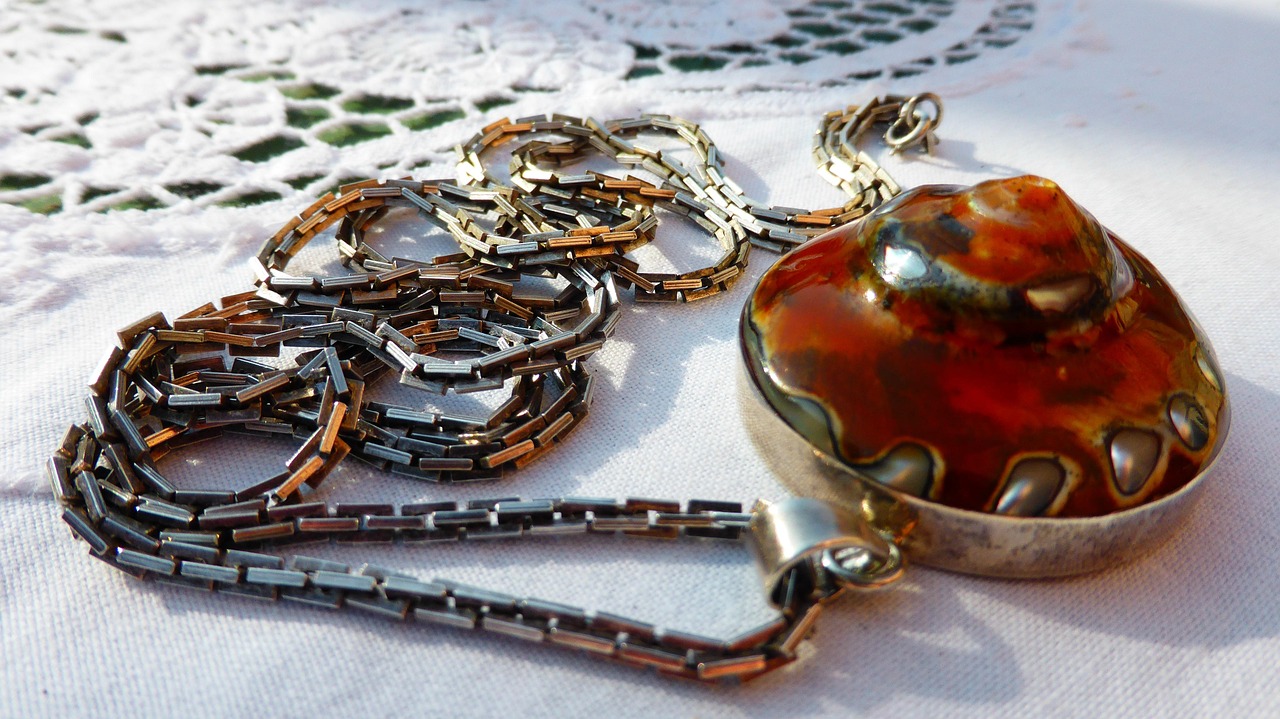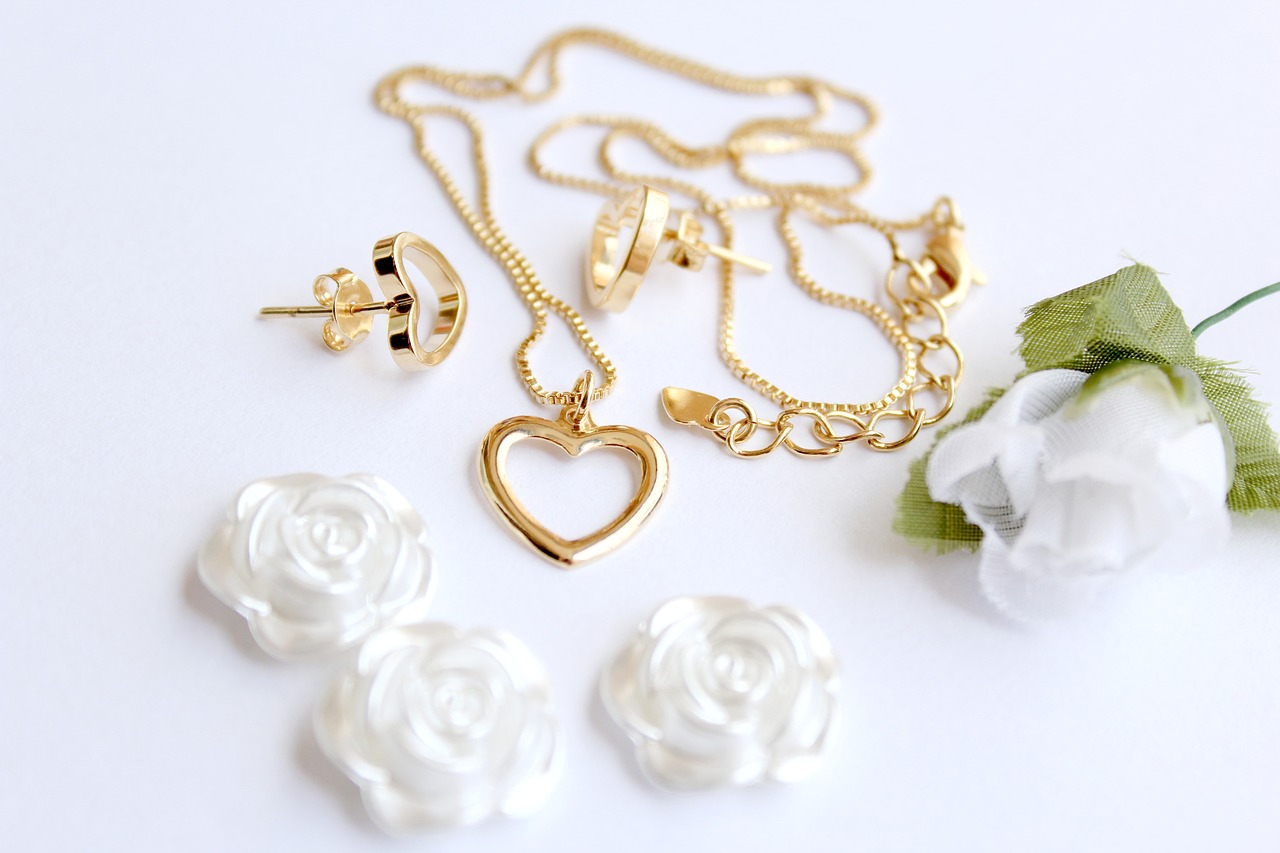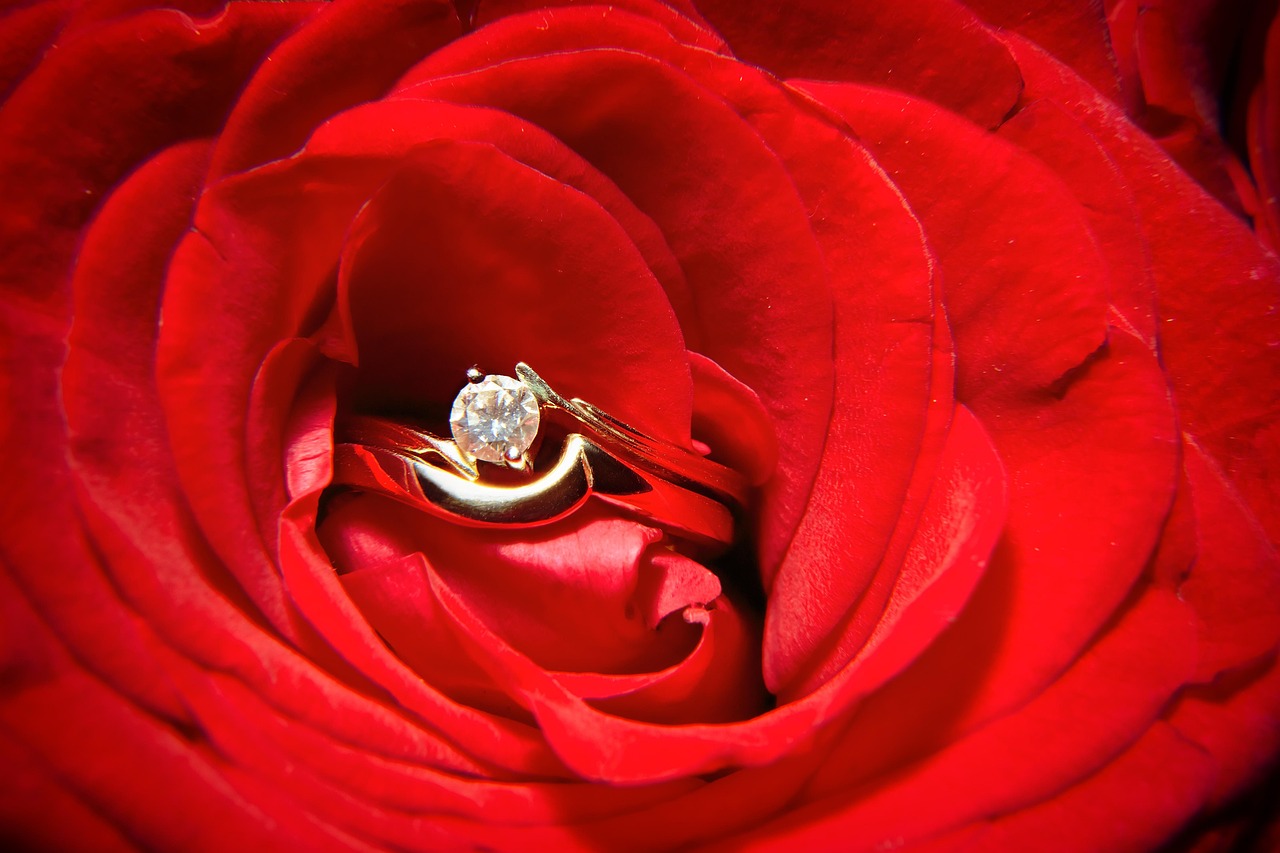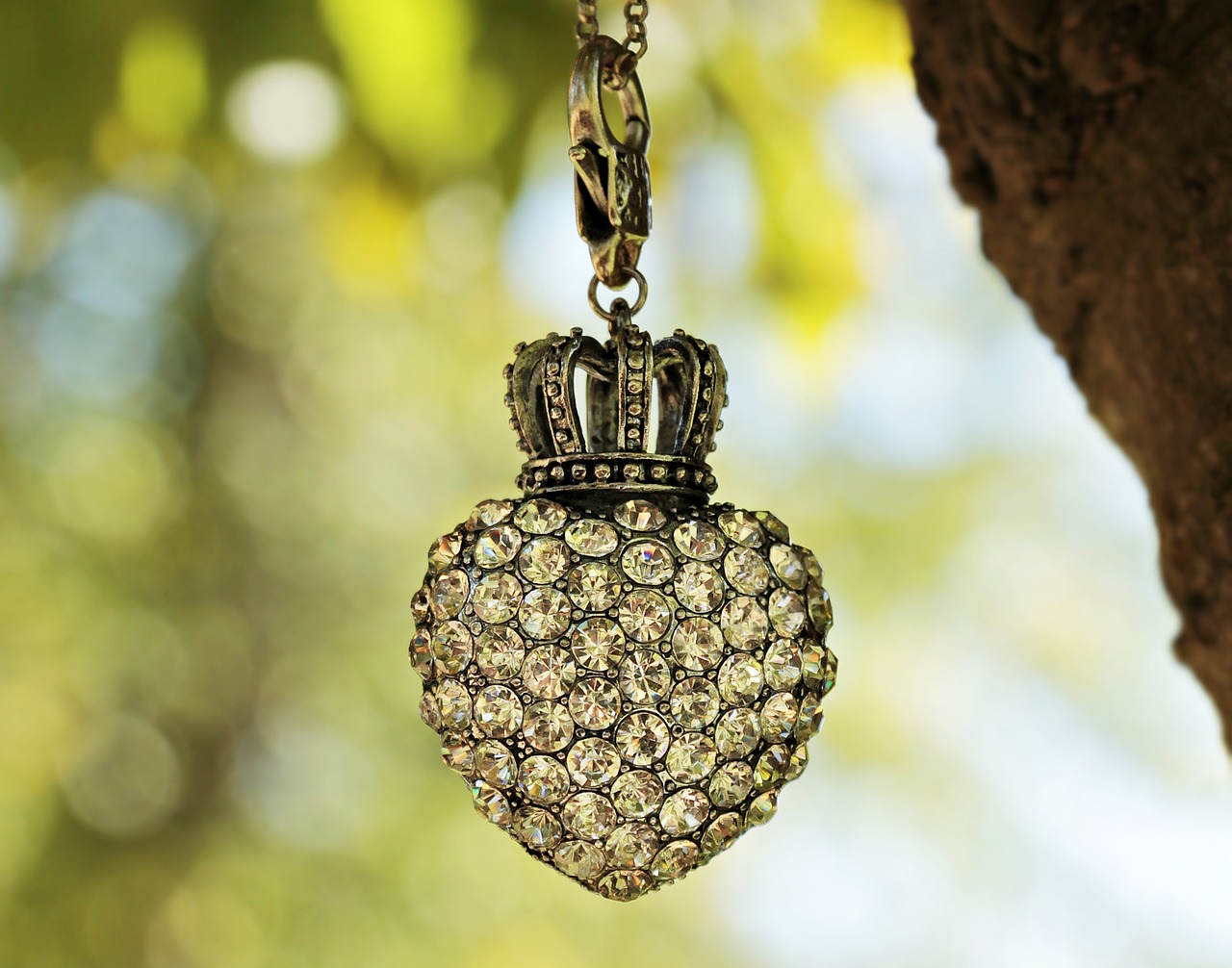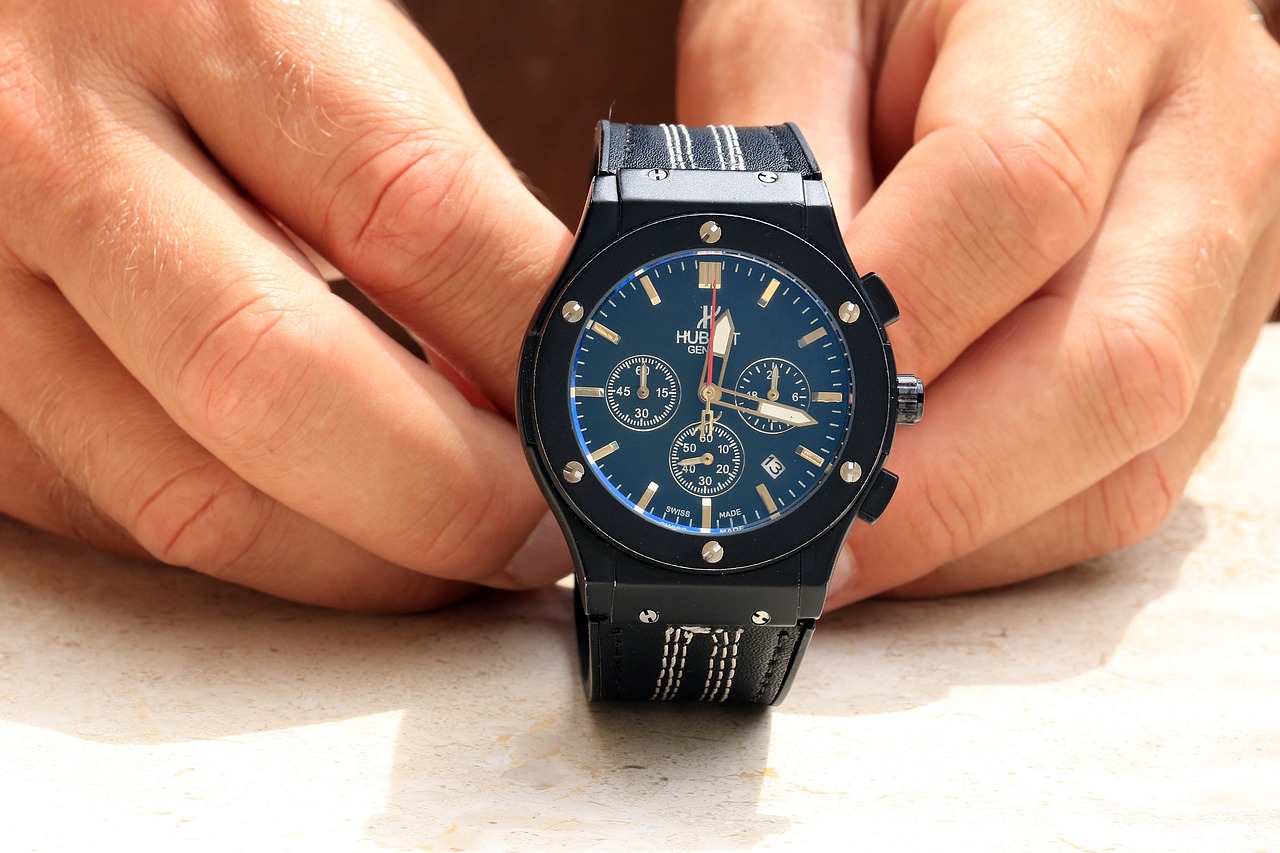When it comes to purchasing a diamond, understanding the 4Cs—Cut, Color, Clarity, and Carat weight—is essential. This guide aims to provide you with a comprehensive understanding of these critical factors, enabling you to make informed purchasing decisions.
The 4Cs are the fundamental characteristics that determine a diamond’s quality and value. Each aspect plays a significant role in influencing your final choice. By grasping these concepts, you can select a diamond that meets both your aesthetic desires and budgetary constraints.
The cut of a diamond is arguably the most important of the 4Cs. It directly affects the diamond’s brilliance and sparkle. A well-executed cut allows light to enter and exit the diamond optimally, enhancing its overall visual appeal.
The angles and proportions of a diamond dictate how light interacts with it. A precise cut maximizes light return, creating that coveted sparkle that captures attention. Poorly cut diamonds may appear dull, regardless of their other qualities.
- Excellent
- Very Good
- Good
- Fair
- Poor
Understanding these grades helps you choose wisely, ensuring you invest in a diamond that radiates beauty.
Diamonds come in various shapes, each with unique qualities. Popular shapes include:
- Round
- Princess
- Emerald
- Oval
- Heart
Your choice of shape can significantly influence the diamond’s overall appearance and your personal satisfaction.
Color in diamonds refers to the presence of any hue. The less color a diamond has, the higher its value and desirability. Color grading ranges from D (colorless) to Z (light yellow or brown).
Understanding the color grading scale helps you select a diamond that aligns with your aesthetic preferences. A colorless diamond (D) is considered the most desirable, while diamonds with more color may be more affordable.
Fancy color diamonds come in various hues, such as blue, pink, and yellow. Their unique colors can significantly affect their market value and appeal, making them a popular choice for those seeking something extraordinary.
Clarity measures the presence of internal or external imperfections, known as inclusions and blemishes. A higher clarity grade indicates a more valuable diamond, as fewer imperfections mean a more visually appealing stone.
- Flawless (IF)
- Internally Flawless (VVS1 and VVS2)
- Very Slightly Included (VS1 and VS2)
- Slightly Included (SI1 and SI2)
- Included (I1, I2, and I3)
Knowing these grades can help you choose a diamond that balances quality and budget effectively.
When assessing clarity, consider using a jeweler’s loupe to inspect the diamond closely. This tool can reveal any imperfections that may affect its appearance, allowing for a more informed choice.
Carat weight measures a diamond’s size, with one carat equaling 200 milligrams. This characteristic influences the diamond’s price and visual impact. Generally, larger diamonds are more expensive, but the relationship between carat weight and price isn’t linear.
The price of a diamond typically increases with carat weight. Understanding this relationship can help you budget effectively for your purchase, ensuring you find a diamond that fits your financial plan.
Larger diamonds can create a more significant visual impact, yet the overall appearance also depends on cut, color, and clarity. Balancing these factors is key to a satisfactory purchase.
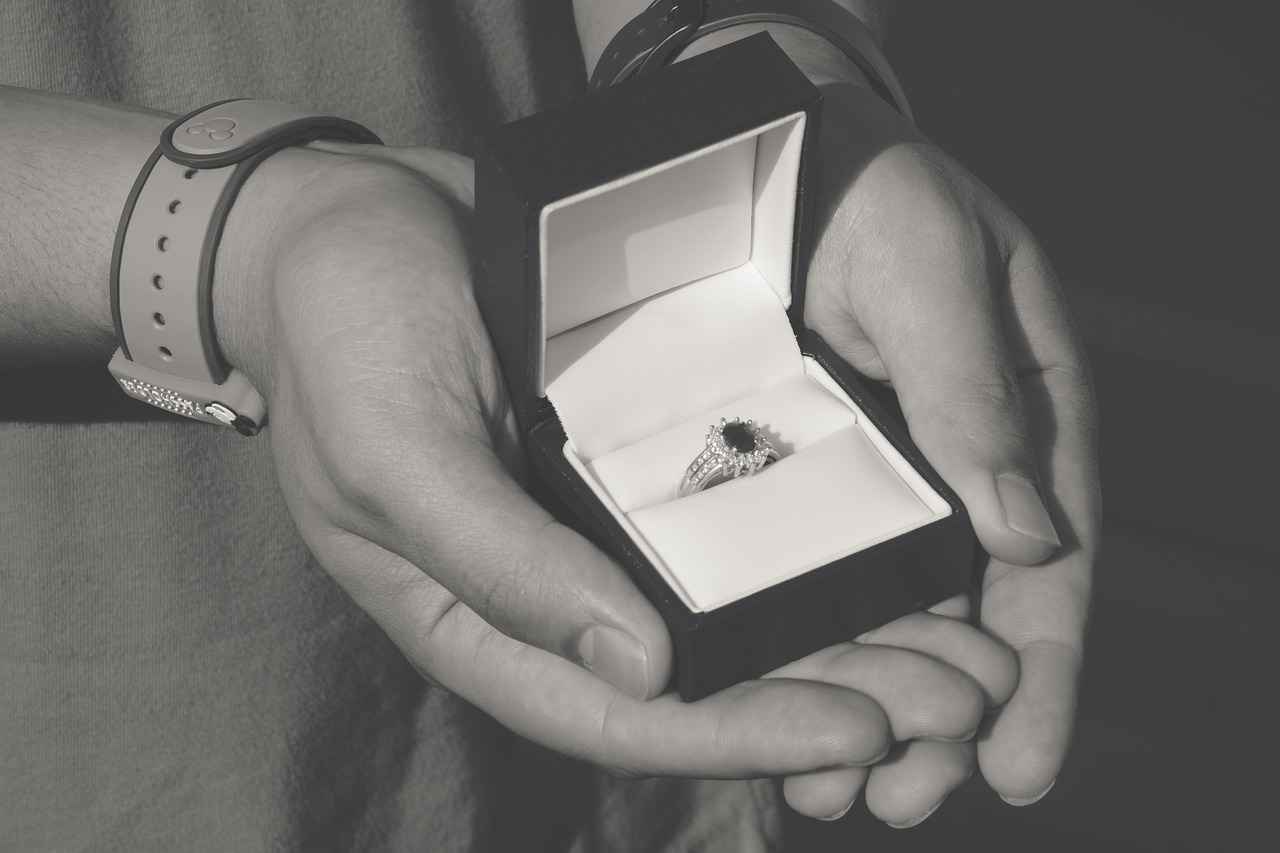
What Are the 4Cs of Diamonds?
When it comes to purchasing a diamond, understanding the 4Cs is essential. These four characteristics—Cut, Color, Clarity, and Carat weight—play a significant role in determining the quality and value of the diamond you are considering. Each of these factors not only influences the diamond’s appearance but also impacts your overall investment.
The 4Cs serve as the universal standard for assessing diamond quality. Understanding these attributes is crucial for any buyer, as they directly influence both the aesthetic appeal and the price of the diamond. Let’s break down each of the 4Cs:
- Cut: This refers to how well the diamond has been shaped and faceted. The cut affects how light interacts with the diamond, significantly influencing its brilliance.
- Color: Diamonds come in a variety of colors, with the most valuable being completely colorless. The presence of color can affect a diamond’s desirability and value.
- Clarity: This characteristic measures the presence of imperfections, known as inclusions and blemishes. A higher clarity grade indicates a more flawless diamond.
- Carat Weight: This measures the size of the diamond. As carat weight increases, so does the price, making it a critical factor in your purchasing decision.
The cut of a diamond is arguably the most important of the 4Cs. A well-cut diamond reflects light beautifully, creating a dazzling sparkle that captures attention. The angles and proportions of the cut determine how effectively the diamond returns light, enhancing its overall appeal.
Color in diamonds ranges from D (colorless) to Z (light yellow or brown). The less color a diamond has, the more valuable it typically is. Understanding this grading scale allows buyers to select a diamond that aligns with their aesthetic preferences while also considering its market value.
Clarity measures the presence of internal or external imperfections. Diamonds are graded from Flawless to Included, with higher clarity grades indicating fewer visible flaws. Buyers should assess clarity carefully, as even small inclusions can affect the diamond’s visual appeal.
Carat weight is a direct measure of a diamond’s size, with one carat equaling 200 milligrams. Larger diamonds command higher prices, but the overall beauty of the diamond also depends on its cut, color, and clarity. It’s essential to find a balance among these factors to ensure a satisfying purchase.
When selecting a diamond, consider your personal preferences and budget. Evaluate each of the 4Cs and how they align with your desired qualities. For example, if you prioritize sparkle, focus on cut quality. If size is most important, pay attention to carat weight. Ultimately, understanding the 4Cs will empower you to make an informed decision that you will cherish for years to come.
In summary, the 4Cs of diamonds are vital for anyone looking to make a purchase. By comprehensively understanding these characteristics, you can navigate the complex world of diamonds with confidence and clarity.
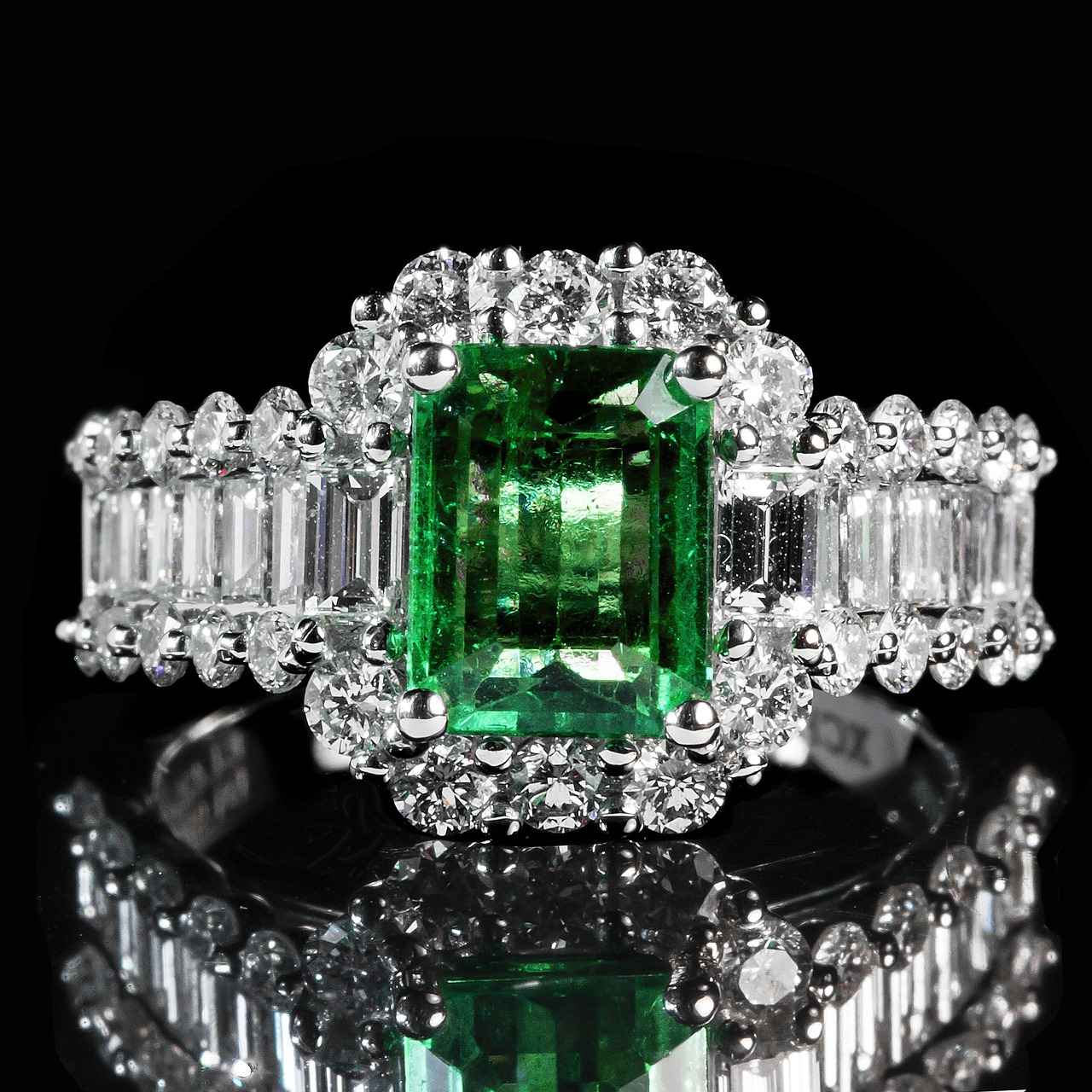
Why Is Cut Important in Diamonds?
When it comes to purchasing a diamond, one of the most critical factors to consider is the cut. The cut of a diamond influences not only its appearance but also its overall value and desirability. A well-executed cut can make a diamond appear more brilliant and sparkly, while a poor cut can diminish its beauty significantly. Understanding the importance of cut is essential for anyone looking to invest in a diamond.
The cut of a diamond determines how light interacts with its facets. A precisely cut diamond will reflect light back to the viewer’s eye, creating a mesmerizing sparkle. The angles and proportions of the diamond are crucial; they dictate how light enters and exits the stone. A diamond that is cut too shallow or too deep can cause light to escape from the bottom or sides, resulting in a dull appearance. Therefore, the quality of the cut is directly linked to the diamond’s brilliance and fire.
Diamond cut grades range from Excellent to Poor. Each grade reflects the quality of the cut and its impact on the diamond’s visual appeal:
- Excellent: Maximizes light return, resulting in exceptional sparkle.
- Very Good: Nearly as brilliant as Excellent but may have slight imperfections.
- Good: Acceptable performance, though some light may escape.
- Fair: Noticeable loss of brilliance due to poor proportions.
- Poor: Significant light leakage, leading to a dull appearance.
Diamonds come in various shapes, each influencing how the cut affects the overall appearance. Some popular shapes include:
- Round: The most popular shape, known for its incredible sparkle.
- Princess: A modern shape that combines brilliance and contemporary appeal.
- Emerald: Features a rectangular cut with step facets, emphasizing clarity.
- Oval: An elongated shape that can appear larger than its carat weight.
- Marquise: A unique shape that maximizes carat weight, offering a dramatic look.
When assessing a diamond’s cut quality, focus on three main factors: proportions, symmetry, and polish. Proportions refer to the measurements of the diamond, including its depth and table size. Symmetry assesses how well the facets align, while polish evaluates the smoothness of the diamond’s surface. A diamond with excellent proportions, symmetry, and polish will exhibit superior brilliance and fire.
While color, clarity, and carat weight are essential, the cut often has the most significant impact on a diamond’s beauty. A high-quality cut can enhance the visual appeal of a diamond, even if it has lower color or clarity grades. Therefore, prioritizing cut is a wise strategy for maximizing the overall aesthetic value of your diamond purchase.
In summary, understanding the importance of cut in diamonds is crucial for making an informed purchase. A well-cut diamond not only enhances its beauty but also increases its value. By considering cut alongside other factors, you can choose a diamond that truly captivates.
How Does Cut Affect Light Performance?
When it comes to diamonds, the cut plays a pivotal role in determining their overall beauty and brilliance. Understanding how the cut affects light performance can significantly enhance your appreciation for these stunning gemstones. This section delves into the intricacies of diamond cuts and their impact on light interaction.
The cut of a diamond refers not only to its shape but also to how well it has been crafted. It encompasses the angles, proportions, and symmetry of the diamond. A well-executed cut will maximize the amount of light that enters the diamond and reflects back to the observer’s eye, creating that coveted sparkle that everyone desires.
The angles and proportions of a diamond are critical in determining how light interacts with it. When a diamond is cut to precise specifications, it allows light to enter through the top and bounce around inside before exiting. This process is what creates the fire and brilliance that diamonds are famous for.
| Cut Quality | Light Performance |
|---|---|
| Excellent | Maximizes brilliance and fire |
| Very Good | Reflects most light effectively |
| Good | Acceptable light performance |
| Fair | Less sparkle, some light leakage |
| Poor | Significant light leakage |
A diamond with a poor cut will not reflect light efficiently. Instead of creating a stunning display of sparkle, it may appear dull and lifeless. This is often due to light leakage, where light escapes through the bottom rather than reflecting back to the viewer. Therefore, investing in a diamond with a high-quality cut is essential for achieving the best visual results.
When assessing a diamond’s cut, consider the following factors:
- Proportions: The ratio of the diamond’s height to its width affects how light is refracted.
- Symmetry: A diamond that is symmetrical will reflect light more evenly, enhancing its brilliance.
- Polish: A well-polished diamond will have a smooth surface that allows light to travel freely.
Diamonds come in various shapes, each with unique characteristics that influence light performance:
- Round: The most popular shape, known for its exceptional brilliance.
- Princess: A modern cut that combines brilliance with a square shape.
- Emerald: Known for its step-cut facets that emphasize clarity.
- Oval: An elongated shape that can appear larger than its carat weight.
In conclusion, understanding how the cut of a diamond affects its light performance is essential for making an informed purchase. A well-cut diamond will not only enhance your jewelry collection but also provide the stunning sparkle that makes diamonds so desirable.
What Are the Different Cut Grades?
When it comes to purchasing a diamond, one of the most critical factors to consider is the cut grade. The cut of a diamond not only determines its overall appearance but also affects its brilliance and sparkle. Understanding the different cut grades is essential for making an informed decision.
Cut grades range from Excellent to Poor, and each grade plays a significant role in the diamond’s visual appeal. A diamond’s cut is evaluated based on its proportions, symmetry, and polish, which all contribute to how well it reflects light. Here’s a breakdown of the cut grades:
| Cut Grade | Description | Visual Appeal |
|---|---|---|
| Excellent | Reflects maximum light, showcasing exceptional sparkle. | Highly desirable; exhibits the best brilliance. |
| Very Good | Almost as brilliant as Excellent but may have minor flaws. | Great choice for value without sacrificing much visual appeal. |
| Good | Acceptable light performance, but noticeable differences in brilliance. | Offers a balance between quality and price. |
| Fair | Light performance is below average, with visible inclusions. | Less desirable; may not offer the sparkle expected. |
| Poor | Significant issues with light performance and visual appeal. | Generally avoided by serious buyers. |
Why Is Understanding Cut Grades Important? Knowing the cut grades helps you make an informed decision when selecting a diamond. A higher cut grade typically means the diamond will have a more captivating appearance, which can enhance its overall value. In contrast, a diamond with a lower cut grade may not meet your expectations in terms of brilliance and beauty.
How Does Cut Impact the Diamond’s Brilliance? The angles and proportions of a diamond directly influence how light interacts with it. A well-cut diamond maximizes light return, creating that sought-after sparkle. This is why investing in a diamond with a high cut grade is often recommended for those who prioritize visual appeal.
What Should You Consider When Choosing a Cut Grade? While it might be tempting to focus solely on carat weight or color, the cut is arguably the most crucial factor affecting a diamond’s overall beauty. It’s essential to evaluate your personal preferences and budget when selecting a cut grade. For example, if you’re looking for a diamond that exudes brilliance and fire, aiming for an Excellent or Very Good cut grade is advisable.
In conclusion, understanding the different cut grades of diamonds is vital for anyone looking to make a significant purchase. By prioritizing cut quality, you can ensure that your diamond not only meets your aesthetic desires but also retains its value over time. Remember, a well-cut diamond can truly elevate the beauty of any piece of jewelry, making it a cherished investment for years to come.
What Shapes Are Available?
When it comes to choosing a diamond, one of the most exciting aspects is the variety of shapes available. Each shape not only offers a distinct aesthetic appeal but also carries its own unique characteristics that may influence your purchasing decision. Understanding these shapes can help you find the perfect diamond that resonates with your personal style and preferences.
- Round Cut: The most popular diamond shape, the round cut is celebrated for its brilliance and sparkle. With 58 facets, it reflects light beautifully, making it a top choice for engagement rings.
- Princess Cut: Known for its modern appeal, the princess cut features sharp corners and a square or rectangular shape. It offers a stunning combination of brilliance and fire, making it a favorite among contemporary brides.
- Emerald Cut: This shape is characterized by its rectangular outline and step-cut facets. The emerald cut emphasizes clarity and color, making it ideal for diamonds with fewer inclusions.
- Oval Cut: The oval cut combines the classic elegance of the round cut with an elongated silhouette. This shape can create the illusion of a larger diamond and is often chosen for its unique look.
- Marquise Cut: With its elongated shape and pointed ends, the marquise cut maximizes carat weight, giving the appearance of a larger diamond. Its unique shape is perfect for those looking to stand out.
- Asscher Cut: Similar to the emerald cut, the Asscher cut has a square shape with step-cut facets. It offers a vintage appeal and is known for its unique “hall of mirrors” effect.
- Pear Cut: The pear cut, also known as the teardrop shape, combines the best features of the round and marquise cuts. It’s a popular choice for pendants and earrings, adding a touch of elegance.
- Radiant Cut: This shape blends the elegance of the emerald cut with the brilliance of the round cut. The radiant cut features trimmed corners and is known for its versatility and sparkle.
When selecting a diamond shape, consider the following:
- Personal Style: Your personal taste plays a significant role in your choice. Consider whether you prefer classic, modern, or vintage styles.
- Setting Compatibility: Some shapes work better with specific settings. For example, round diamonds are versatile and fit well in various settings, while fancy shapes may require more specialized designs.
- Visual Impact: Different shapes can create varying visual effects. For instance, longer shapes like the oval or marquise can create an illusion of size, while round diamonds are known for their brilliance.
- Budget Considerations: Certain shapes may be more cost-effective than others. For instance, fancy shapes often cost less per carat than round diamonds, allowing you to maximize your budget.
Ultimately, the choice of diamond shape should reflect your personality and preferences. Take the time to try on different shapes to see how they look on your hand. Consider your lifestyle, as some shapes may be more practical for everyday wear than others. Consulting with a reputable jeweler can also provide valuable insights and help you find the diamond that fits your vision.
In conclusion, understanding the various diamond shapes available can significantly enhance your purchasing experience. Whether you gravitate towards the timeless elegance of a round diamond or the unique flair of a pear cut, each shape offers something special. Take your time to explore and choose the diamond that truly resonates with you.
How to Evaluate a Diamond’s Cut?
When it comes to purchasing a diamond, understanding how to evaluate a diamond’s cut is paramount. The cut of a diamond is not merely about its shape; it encompasses a variety of factors that together determine the stone’s overall brilliance and visual appeal. In this section, we will delve deeper into the intricacies of diamond cut evaluation, focusing on key aspects such as proportions, symmetry, and polish.
Evaluating a diamond’s cut involves a comprehensive analysis of several critical elements:
- Proportions: The proportions of a diamond refer to the relationship between its various dimensions, including the table size, crown angle, and pavilion depth. These measurements significantly influence how light travels through the diamond, impacting its brilliance.
- Symmetry: A diamond’s symmetry pertains to how well its facets align and mirror each other. A well-symmetrical diamond will reflect light evenly, enhancing its sparkle. Poor symmetry can lead to light leakage, diminishing the diamond’s overall beauty.
- Polish: The polish of a diamond refers to the smoothness of its surface. A diamond with excellent polish will have minimal surface blemishes, which can obstruct light and reduce brilliance. Evaluating the polish is essential for ensuring the diamond’s overall aesthetic quality.
The proportions of a diamond are crucial because they dictate how light interacts with the stone. For example, if the crown angle is too steep or too shallow, it can prevent light from returning to the viewer’s eye, resulting in a dull appearance. Ideally, a diamond should have proportions that maximize light return, creating a stunning display of brilliance and fire.
Symmetry plays a vital role in the visual appeal of a diamond. When a diamond’s facets are cut with precision, they reflect light uniformly, enhancing the stone’s overall sparkle. On the other hand, asymmetrical facets can lead to uneven light reflection, making the diamond appear less vibrant. Therefore, when evaluating a diamond, it’s essential to consider its symmetry rating, which can range from Excellent to Poor.
Polish quality is another critical factor in evaluating a diamond’s cut. A diamond with poor polish may have scratches or blemishes that can interfere with light performance. When assessing a diamond, look for one with a polish grade of Excellent or Very Good to ensure that its surface is free from significant imperfections that could affect its brilliance.
When shopping for a diamond, it is advisable to examine it in person, ideally under natural light. Use a jeweler’s loupe to inspect the diamond closely. This tool can help you identify any imperfections in the cut, symmetry, or polish that may not be visible to the naked eye. Additionally, ask for the diamond’s grading report from a reputable gemological laboratory, which provides detailed information about its cut quality.
Cut grades are essential indicators of a diamond’s quality. They typically range from Excellent to Poor, with each grade reflecting the diamond’s ability to reflect light effectively. A diamond graded as Excellent will have optimal proportions, symmetry, and polish, making it a worthwhile investment.
In summary, evaluating a diamond’s cut involves a careful consideration of proportions, symmetry, and polish. By understanding these elements, you can make a more informed decision when purchasing a diamond, ensuring that you select a stone that exhibits exceptional brilliance and beauty.

What Does Diamond Color Mean?
When it comes to diamonds, understanding the color can significantly influence your buying decision. The color of a diamond refers to the presence of any hue, and it plays a crucial role in determining the stone’s overall value and desirability. In this section, we will delve deeper into what diamond color means, how it is graded, and its impact on the diamond market.
Color in diamonds is primarily assessed based on the absence of color. The most desirable diamonds are those that are completely colorless. As a diamond exhibits more color—typically in shades of yellow or brown—its value tends to decrease. This is due to the fact that colorless diamonds allow more light to pass through, enhancing their brilliance and sparkle.
Diamonds are graded on a scale that ranges from D to Z. A grade of D indicates a colorless diamond, while Z represents a diamond with noticeable light yellow or brown hues. The grading scale is crucial for buyers as it provides a standardized method for assessing color quality. Here’s a breakdown of the grading scale:
- D – Colorless
- E – Colorless
- F – Colorless
- G – Near Colorless
- H – Near Colorless
- I – Near Colorless
- J – Slightly Tinted
- K – Faint Yellow
- L – Faint Yellow
- M – Faint Yellow
- N-Z – Light Yellow/Brown
In addition to the traditional color grading, there are fancy color diamonds that exhibit vivid hues such as blue, pink, and green. These diamonds are rare and can command significantly higher prices than their colorless counterparts. The value of fancy color diamonds is determined by the hue, tone, and saturation of the color. For example, a deep blue diamond is generally more valuable than a light blue diamond due to its rarity and striking appearance.
The color of a diamond directly impacts its visual appeal and market value. Buyers often have personal preferences regarding color, which can influence their choices. A diamond with a lower color grade might still be appealing to some individuals, especially if it has other attributes like excellent cut and clarity. However, for those seeking investment-grade diamonds, colorless stones typically hold their value better over time.
When selecting a diamond, consider your personal taste and how the diamond will be set. For example, a diamond set in yellow gold may appear less colorless than one set in white gold or platinum. It is advisable to view diamonds in various lighting conditions to understand how their color can change. Additionally, consulting with a jeweler can provide insights into which color grade will best suit your needs and preferences.
Ultimately, understanding the significance of diamond color can empower you to make a more informed decision when purchasing. By taking the time to learn about the grading system and considering your personal preferences, you can select a diamond that not only meets your aesthetic desires but also holds its value.
How Is Diamond Color Graded?
When it comes to selecting the perfect diamond, understanding its color grading is essential. The color of a diamond plays a pivotal role in determining its overall beauty and value. Graded on a scale from D to Z, this classification reveals the presence of any hue in the diamond, with D being completely colorless and Z exhibiting noticeable shades of light yellow or brown.
The diamond color scale is a standardized method used by gemologists to evaluate the color quality of diamonds. Here’s a brief overview:
| Grade | Description |
|---|---|
| D | Colorless – The highest quality, completely devoid of color. |
| E-F | Colorless – Near colorless, with only minute traces of color detectable by an expert. |
| G-H | Near Colorless – Slightly noticeable color, but generally appears colorless to the untrained eye. |
| I-J | Near Colorless – Noticeable color, but still acceptable for many buyers. |
| K-Z | Light Yellow or Brown – Increasingly noticeable color as the scale progresses. |
Choosing a diamond with the right color can significantly enhance its appeal. Colorless diamonds (D-F grades) are typically more sought after due to their brilliance and rarity. However, diamonds in the G-H range can offer excellent value while still appearing nearly colorless.
When selecting a diamond, consider the following factors:
- Setting: The metal of the ring can influence how the diamond’s color is perceived. For example, yellow gold can enhance the warmth of diamonds in the K-Z range.
- Personal Preference: Some individuals may prefer the warmth of slightly colored diamonds, while others might insist on a colorless option.
- Budget: Colorless diamonds tend to be more expensive. If you’re looking to save, consider diamonds in the G-H range.
In addition to the traditional grading scale, there are also fancy color diamonds, which are graded based on their hue, tone, and saturation. These diamonds can be found in stunning colors like blue, pink, and green, and their value is determined by the intensity and rarity of the color. Fancy color diamonds often command higher prices due to their unique appeal.
If you’re shopping for a diamond, you can assess its color using a few simple techniques:
- Compare Diamonds: View several diamonds side by side under the same lighting conditions to better assess color differences.
- Use Natural Light: Examine the diamond outdoors or in natural light to see its true color.
- Consult an Expert: If unsure, seek the advice of a professional jeweler who can provide insights based on their expertise.
Understanding how diamonds are graded for color can empower you to make an informed decision when purchasing. By considering your preferences, budget, and the overall aesthetic you desire, you can select a diamond that truly represents your style.
What Are Fancy Color Diamonds?
When it comes to diamonds, color plays a significant role in determining their value and appeal. Among the various types of diamonds, fancy color diamonds stand out due to their unique and vibrant hues. These diamonds are not just a simple variation of traditional diamonds; they possess a spectrum of colors that can captivate any collector or jewelry enthusiast.
Fancy color diamonds are graded based on three primary criteria: hue, tone, and saturation. The hue refers to the actual color of the diamond, such as blue, pink, or yellow. The tone indicates how light or dark the color is, while saturation measures the intensity of the color. A diamond with a rich, intense color is generally more desirable and valuable than one with a paler or less saturated hue.
The market value of fancy color diamonds can vary dramatically based on their color. For example, pink diamonds are among the rarest and can command exceptionally high prices. Blue diamonds, made famous by the Hope Diamond, are also highly sought after. In contrast, yellow diamonds, while still beautiful, are more common and typically less expensive. The rarity and desirability of each color significantly influence their market appeal.
Investing in fancy color diamonds can be a lucrative decision for collectors and investors alike. As these diamonds become increasingly rare, their value tends to appreciate over time. Additionally, their stunning colors make them a popular choice for unique jewelry pieces, ensuring they remain in demand. As a result, owning a fancy color diamond can be both a personal treasure and a sound investment.
When selecting a fancy color diamond, consider the following factors:
- Color Quality: Look for diamonds with a deep, vibrant hue and high saturation.
- Certification: Always choose diamonds that come with a grading report from a reputable gemological laboratory.
- Shape and Cut: The cut can influence how the color is perceived, so select a shape that enhances the diamond’s natural beauty.
- Market Trends: Stay informed about current trends in the fancy color diamond market to make a wise investment.
Purchasing fancy color diamonds requires careful consideration. It is advisable to buy from reputable jewelers or auction houses that specialize in colored diamonds. Online platforms can also offer a wide selection, but ensure they provide detailed descriptions and certification for each diamond.
Fancy color diamonds are a remarkable choice for anyone looking to invest in something truly unique. Their stunning colors and potential for appreciation make them a worthwhile addition to any collection. Whether you are drawn to the allure of a blue diamond or the romantic charm of a pink diamond, understanding their characteristics and market dynamics will empower you to make an informed purchase.

Understanding Clarity in Diamonds
When it comes to purchasing a diamond, understanding the clarity of the stone is essential. Clarity refers to the presence of internal or external imperfections, which are commonly known as inclusions and blemishes. These imperfections can affect not only the appearance but also the value of the diamond. A diamond with a higher clarity grade is typically more valuable and sought after by buyers.
Inclusions are internal flaws that can occur during the diamond’s formation, such as air bubbles or mineral deposits. On the other hand, blemishes are external marks, such as scratches or nicks, that can occur after the diamond has been cut. Both inclusions and blemishes can impact the diamond’s brilliance and overall aesthetic.
Clarity grading is performed by gemological laboratories, and it typically follows a scale that ranges from Flawless (F) to Included (I). Here’s a brief overview of the clarity grades:
| Grade | Description |
|---|---|
| Flawless (F) | No inclusions or blemishes visible under 10x magnification. |
| Internally Flawless (IF) | No inclusions visible under 10x magnification, only minor blemishes. |
| Very Slightly Included (VVS1 & VVS2) | Inclusions are difficult to see under 10x magnification. |
| Slightly Included (SI1 & SI2) | Inclusions are noticeable under 10x magnification but may be difficult to see with the naked eye. |
| Included (I1, I2, I3) | Inclusions are visible to the naked eye and may affect the diamond’s durability. |
The clarity of a diamond plays a crucial role in its overall beauty and value. Higher clarity diamonds tend to have better light performance, resulting in more brilliance and sparkle. When light enters a diamond, it interacts with these imperfections, potentially diminishing its visual appeal. Therefore, a diamond with fewer inclusions and blemishes will generally have a more captivating appearance.
When evaluating a diamond’s clarity, it is advisable to use a jeweler’s loupe or a microscope. This will allow you to inspect the diamond closely and identify any imperfections. Additionally, consider consulting with a reputable jeweler who can provide insights into the diamond’s clarity and overall quality.
While clarity is significant, it is important to balance it with other factors such as cut, color, and carat weight. A diamond with a high clarity grade but poor cut may not exhibit the same brilliance as a well-cut diamond with slightly lower clarity. Therefore, it is essential to consider the overall quality of the diamond rather than focusing solely on clarity.
In conclusion, understanding the clarity of diamonds is vital for making an informed purchase. By familiarizing yourself with the grading system and the implications of inclusions and blemishes, you can select a diamond that meets your aesthetic preferences and budget. Always remember that clarity is just one of the many factors that contribute to a diamond’s beauty and value.
What Are the Clarity Grades?
When it comes to purchasing a diamond, understanding its clarity is essential. Clarity refers to the presence of internal or external imperfections, which can significantly influence a diamond’s overall beauty and value. The clarity grades serve as a guide to help you assess the quality of a diamond, ensuring that you make an informed decision that aligns both with your aesthetic preferences and budget.
Clarity grades are categorized into several distinct levels, ranging from Flawless to Included. Each grade reflects the presence and visibility of inclusions and blemishes under magnification. Understanding these grades can help you choose a diamond that offers the best value for your investment.
- Flawless (F): No inclusions or blemishes visible under 10x magnification. This grade is extremely rare and often comes with a significant price tag.
- Internally Flawless (IF): No inclusions visible under 10x magnification, but minor blemishes may be present on the surface. This is a highly sought-after grade.
- Very Very Slightly Included (VVS1 and VVS2): Inclusions are very difficult to detect, even for a skilled grader. These diamonds offer excellent quality.
- Very Slightly Included (VS1 and VS2): Minor inclusions are visible under 10x magnification but are generally not noticeable to the naked eye.
- Slightly Included (SI1 and SI2): Inclusions are noticeable under magnification and may be visible to the naked eye in SI2 diamonds.
- Included (I1, I2, and I3): Inclusions are visible to the naked eye, affecting the diamond’s brilliance and overall appearance.
Knowing the clarity grades helps you strike a balance between quality and budget. A higher clarity grade typically means a more valuable diamond, but it may not always be necessary to choose the highest grade. For example, a VS2 diamond may appear just as beautiful as an IF diamond to the untrained eye, allowing you to save money without sacrificing appearance.
To accurately assess the clarity of a diamond, consider using a jeweler’s loupe, which magnifies the stone to reveal any imperfections. It’s advisable to examine the diamond in different lighting conditions to see how the inclusions affect its brilliance. Additionally, reputable jewelers often provide certification from gemological laboratories, which can give you a reliable clarity grade.
When selecting a diamond, consider your personal preferences and how the diamond will be used. For instance, if it’s for an engagement ring that will be worn daily, you might want to opt for a clarity grade of VS1 or VS2 to ensure durability while maintaining a stunning appearance. Conversely, if the diamond is for a special occasion, you may wish to invest in a higher clarity grade.
In conclusion, understanding the clarity grades of diamonds is crucial for making an informed purchase. By familiarizing yourself with these grades and considering your personal preferences, you can choose a diamond that not only fits your budget but also meets your aesthetic desires. Remember, while clarity is important, it is just one of the 4Cs that contribute to the overall beauty and value of a diamond.
How to Assess Clarity in Diamonds?
When it comes to purchasing a diamond, understanding its clarity is essential for making an informed decision. Clarity refers to the presence of internal and external flaws, known as inclusions and blemishes, respectively. These imperfections can significantly influence a diamond’s overall beauty and value.
Diamond clarity is a grading system that evaluates the visibility of these imperfections. A diamond with fewer visible flaws is typically more desirable and commands a higher price. The clarity scale ranges from Flawless (F), indicating no inclusions visible under 10x magnification, to Included (I), where inclusions are easily visible to the naked eye.
The grading of diamond clarity is conducted by professional gemologists who assess the diamond under controlled lighting conditions. They look for various factors, including:
- Size: Larger inclusions have a greater impact on clarity.
- Number: The more inclusions present, the lower the clarity grade.
- Location: Inclusions located in prominent areas can affect the diamond’s appearance more than those hidden from view.
- Nature: The type of inclusion can also affect the grade; for example, a tiny crystal inclusion may be less impactful than a dark spot.
To accurately assess a diamond’s clarity, it is recommended to use a jeweler’s loupe, a small magnifying glass designed for close inspection. Here’s how to effectively use it:
1. Find a well-lit area to examine the diamond.2. Hold the loupe close to your eye and bring the diamond to your line of sight.3. Look for any visible inclusions or blemishes.4. Rotate the diamond to inspect it from multiple angles.
This close examination can reveal imperfections that might not be visible to the naked eye, allowing you to better understand the diamond’s quality.
The clarity grades are categorized as follows:
| Grade | Description |
|---|---|
| Flawless (F) | No inclusions or blemishes visible under 10x magnification. |
| Internally Flawless (IF) | No inclusions, only blemishes visible under magnification. |
| Very Very Slightly Included (VVS1 and VVS2) | Inclusions are difficult to detect under 10x magnification. |
| Very Slightly Included (VS1 and VS2) | Minor inclusions visible under 10x magnification. |
| Slightly Included (SI1 and SI2) | Inclusions visible under 10x magnification, may be visible to the naked eye. |
| Included (I1, I2, I3) | Inclusions visible to the naked eye, affecting transparency and brilliance. |
The clarity of a diamond plays a crucial role in its overall appearance and market value. A diamond with higher clarity will typically exhibit better light performance and visual appeal. While it may be tempting to prioritize carat weight or color, clarity should not be overlooked as it can significantly impact the diamond’s beauty and desirability.
In summary, understanding and assessing diamond clarity is vital for making an informed purchase. By using tools like a jeweler’s loupe and familiarizing yourself with clarity grades, you can ensure that the diamond you choose meets your expectations for quality and appearance.
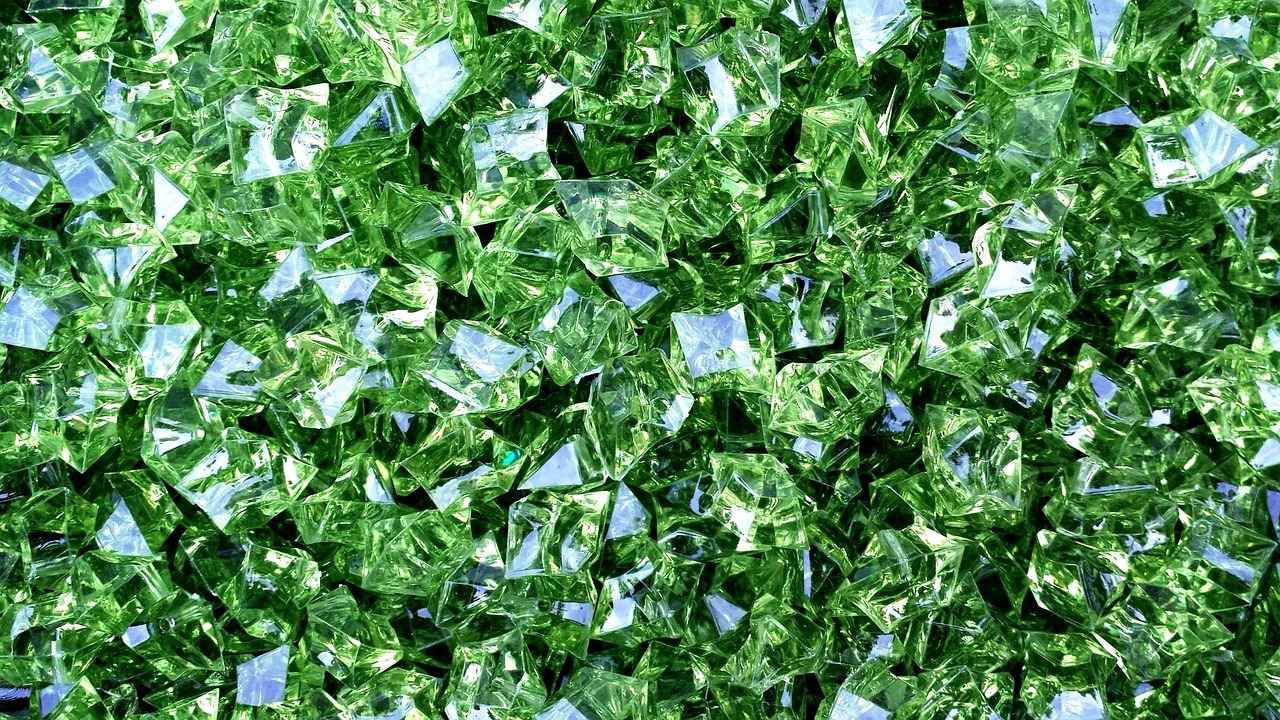
What Is Carat Weight and Its Importance?
When it comes to purchasing a diamond, understanding its carat weight is essential. Carat weight is a key factor that not only determines the size of the diamond but also plays a significant role in its overall value. This article will delve deeper into what carat weight means, how it impacts pricing, and why it is important when selecting a diamond.
Carat weight measures a diamond’s size, with one carat equaling 200 milligrams. This weight measurement is crucial because it directly influences the diamond’s appearance and pricing. Generally, the larger the diamond, the more expensive it tends to be, making carat weight a significant consideration for buyers.
The relationship between carat weight and price is often exponential. As the carat weight increases, the price per carat typically rises significantly. For instance, a 2-carat diamond may not just cost double that of a 1-carat diamond; it could be several times more expensive due to its rarity and desirability. This phenomenon is often referred to as the carat price escalation.
While larger diamonds create a more significant visual impact, the overall appearance also depends on other factors such as cut, color, and clarity. A well-cut smaller diamond can sometimes appear more brilliant than a larger, poorly cut diamond. Therefore, it is essential to consider the balance of these characteristics when making a purchase.
- Consider Your Budget: Determine how much you are willing to spend on a diamond and choose a carat weight that fits within that budget.
- Think About Ring Size: The size of the person’s hand and finger can also influence how a diamond’s carat weight is perceived. A smaller diamond may look more substantial on a petite hand.
- Evaluate the Setting: The type of setting can enhance or diminish the appearance of the diamond’s size. A well-designed setting can make a smaller diamond look larger.
Diamonds are available in a variety of carat weights, with the most popular being:
| Carat Weight | Approximate Size (mm) | Typical Price Range |
|---|---|---|
| 1.0 Carat | 6.5 mm | $4,000 – $10,000 |
| 1.5 Carats | 7.4 mm | $6,000 – $15,000 |
| 2.0 Carats | 8.1 mm | $10,000 – $30,000 |
Understanding carat weight is vital for making an informed decision. It helps you set realistic expectations regarding size and price. Furthermore, it allows you to prioritize other aspects of the diamond, such as cut and clarity, which can enhance its overall beauty. A diamond’s carat weight should align with your personal preferences and budget, ensuring that you find a piece that you will cherish for years to come.
How Does Carat Weight Affect Price?
When it comes to purchasing a diamond, understanding the relationship between carat weight and price is essential for anyone looking to make an informed decision. Carat weight is one of the four critical factors that determine a diamond’s value, alongside cut, color, and clarity. This article delves into how carat weight influences pricing and what potential buyers should consider when budgeting for their diamond purchase.
Carat weight measures a diamond’s size, with one carat equivalent to 200 milligrams. Generally, the larger the diamond, the more expensive it is. However, the increase in price is not linear; rather, it follows a more complex pattern influenced by demand and rarity.
Carat weight significantly impacts a diamond’s visual presence and market value. Larger diamonds are often perceived as more desirable, making them a sought-after choice for engagement rings and other fine jewelry. As the size of the diamond increases, so does its rarity, which in turn drives up the price.
The price of a diamond typically increases with carat weight. For example, a one-carat diamond may cost significantly less than a two-carat diamond, even if both have similar cut, color, and clarity. This phenomenon occurs because diamonds of larger carat weights are rarer and therefore command a premium in the market.
When evaluating diamonds, it’s vital to consider the price per carat. This figure can vary widely depending on the diamond’s quality characteristics. For instance, a high-quality diamond with excellent cut, color, and clarity will have a higher price per carat than a lower-quality diamond of the same weight. Buyers should analyze these factors to understand the true value of their potential purchase.
While larger diamonds create a more significant visual impact, the overall appearance also depends on the diamond’s cut, color, and clarity. A well-cut diamond, regardless of its carat weight, can appear more brilliant and captivating than a larger, poorly cut diamond. Therefore, balancing these factors is crucial for achieving a satisfactory purchase.
To effectively budget for a diamond purchase, consider the following:
- Set a Budget: Determine how much you are willing to spend before you start shopping.
- Prioritize the 4Cs: Decide which characteristics matter most to you—cut, color, clarity, or carat weight.
- Research Prices: Compare prices from different retailers to ensure you get the best deal.
- Consider Alternatives: If a larger diamond is out of your budget, you might opt for a smaller diamond with superior cut and clarity.
Market trends can also influence the pricing of diamonds based on carat weight. For instance, if larger diamonds become more fashionable, their prices may rise due to increased demand. Conversely, if smaller diamonds gain popularity, their prices may stabilize or even decrease. Staying informed about market trends can help you make a more strategic purchasing decision.
In summary, understanding how carat weight affects price is crucial for anyone looking to buy a diamond. By considering the relationship between carat weight and other quality factors, you can make a well-informed decision that aligns with your budget and personal preferences.
What Are the Visual Effects of Carat Weight?
When it comes to selecting the perfect diamond, understanding the visual effects of carat weight is essential. Carat weight is often one of the first factors that potential buyers consider, as it directly correlates with the size of the diamond. However, it’s important to recognize that while larger diamonds can create a more significant visual impact, the overall appearance is influenced by several other factors, including cut, color, and clarity.
The carat weight of a diamond refers to its size, with one carat equivalent to 200 milligrams. Generally, as the carat weight increases, so does the diamond’s size and price. However, a diamond’s visual impact is not solely determined by carat weight. A well-cut diamond, regardless of its weight, can appear larger and more brilliant than a poorly cut larger diamond. Therefore, understanding the interplay between carat weight and cut is crucial for making an informed purchase.
A diamond’s cut plays a pivotal role in how light interacts with it, which can significantly affect its perceived size. A diamond with an excellent cut reflects light more effectively, enhancing its sparkle and brilliance. This means that a smaller diamond with a superior cut can appear more dazzling than a larger diamond with a mediocre cut. When considering carat weight, always prioritize the cut quality to ensure you maximize the diamond’s visual appeal.
Alongside cut, the color and clarity of a diamond also contribute to its overall appearance. A diamond with a higher color grade (meaning it is closer to colorless) will typically appear more vibrant and striking, regardless of its carat weight. Similarly, diamonds with fewer inclusions or blemishes (higher clarity) will reflect light better, enhancing their visual impact. Therefore, when selecting a diamond, it is essential to balance these characteristics with carat weight.
- Set a Budget: Determine how much you are willing to spend, as carat weight significantly impacts price.
- Consider Finger Size: A larger diamond may look more impressive on larger fingers, while a smaller diamond may be more suitable for petite hands.
- Prioritize Quality: Focus on cut, color, and clarity to ensure that the diamond you choose maximizes visual appeal, even if it means opting for a slightly smaller carat weight.
When purchasing a diamond, it’s essential to understand that larger carat weight often comes with trade-offs. For example, a diamond that weighs two carats may not always be twice as beautiful or valuable as a one-carat diamond. In fact, the quality of the diamond can vary significantly. Thus, it is advisable to consider the 4Cs—cut, color, clarity, and carat weight—together rather than focusing solely on carat weight.
In summary, while larger diamonds can indeed create a more significant visual impact, achieving a satisfactory purchase involves balancing carat weight with cut, color, and clarity. By understanding these factors and their interactions, you can make a more informed decision that aligns with your personal preferences and budget.
Frequently Asked Questions
- What are the 4Cs of diamonds?
The 4Cs stand for Cut, Color, Clarity, and Carat weight. These characteristics are essential in determining a diamond’s quality and value, making them crucial for your buying decision.
- Why is the cut of a diamond so important?
The cut of a diamond influences its brilliance and sparkle. A well-cut diamond reflects light beautifully, enhancing its overall appearance and desirability.
- How is diamond color graded?
Diamonds are graded on a scale from D (colorless) to Z (light yellow or brown). The less color a diamond has, the higher its value, so understanding this scale is key to making a great choice.
- What does clarity mean in diamonds?
Clarity measures the presence of internal or external imperfections, known as inclusions and blemishes. Higher clarity grades indicate fewer imperfections, which typically means a more valuable diamond.
- What is carat weight and why does it matter?
Carat weight measures a diamond’s size, with one carat equaling 200 milligrams. Larger diamonds usually come with a higher price tag, so understanding this can help you budget effectively.

